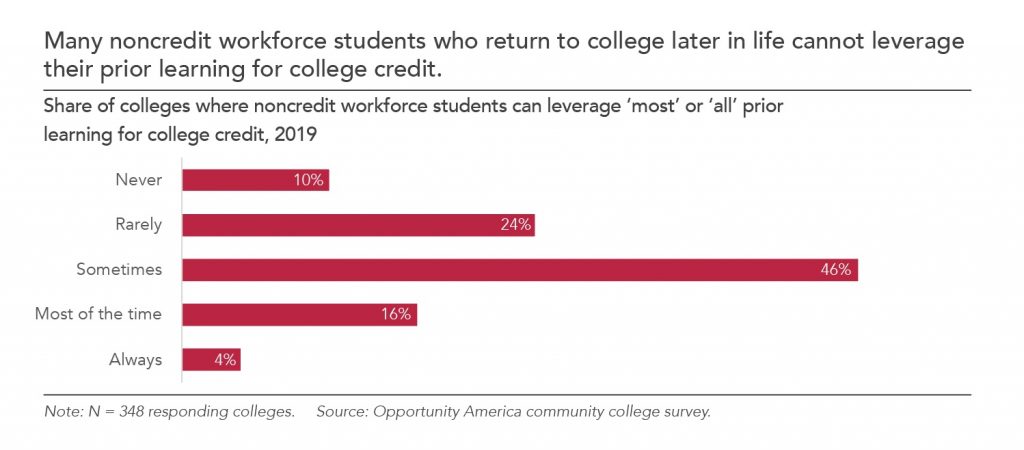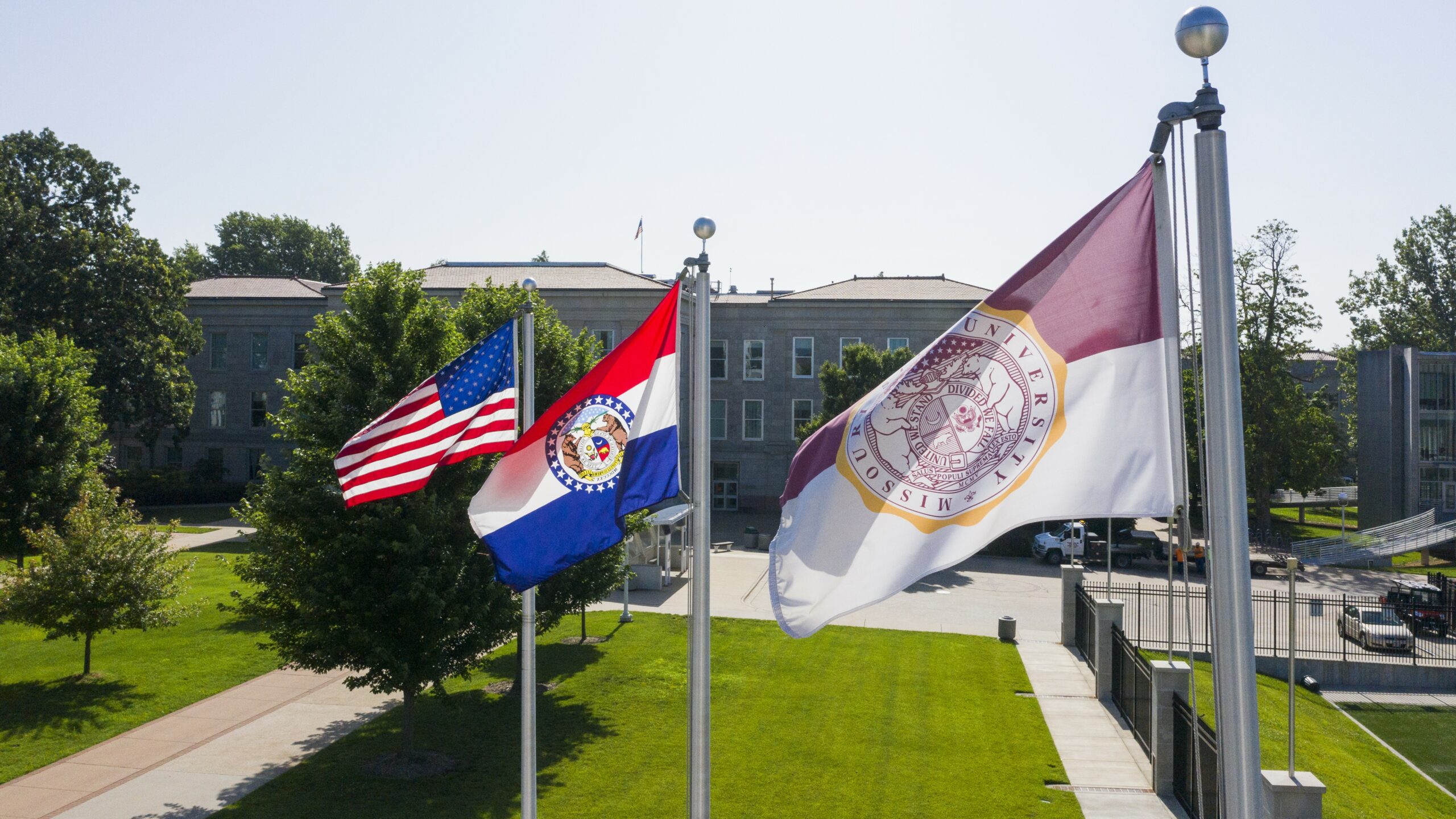“Resuming life after so many months of lockdown offers a once-in-a-lifetime opportunity to reboot.” That bold statement is found in a new report The Indispensable Institution from Opportunity America, in partnership with Lumina Foundation and Wilder Research.
Last year, Opportunity America set out to determine which community and technical colleges are working with employers, offering short job-focused programs and stackable credentials.
At that time, Tamar Jacoby, president of Opportunity America, noted it was still to be determined “how broad or how deep” the innovation at community colleges translates around workforce preparation.
The plan to research workforce education was hatched a few years ago. “We knew that we needed a better map to understand the landscape of community college workforce programs, but in 2018, we couldn’t foresee just how important it would be in a world impacted by COVID today,” says Chauncy Lennon, vice president for learning and work, Lumina Foundation.
To that end, more than 1,260 community and technical colleges were invited to participate in a national survey to get a deeper understanding of the institutions’ credit and noncredit workforce programs, as well as their relationships with employers.
With a response rate of 38%, the findings are significant. Among them, more than 50% of students at the participating institutions are enrolled in job-focused programs.
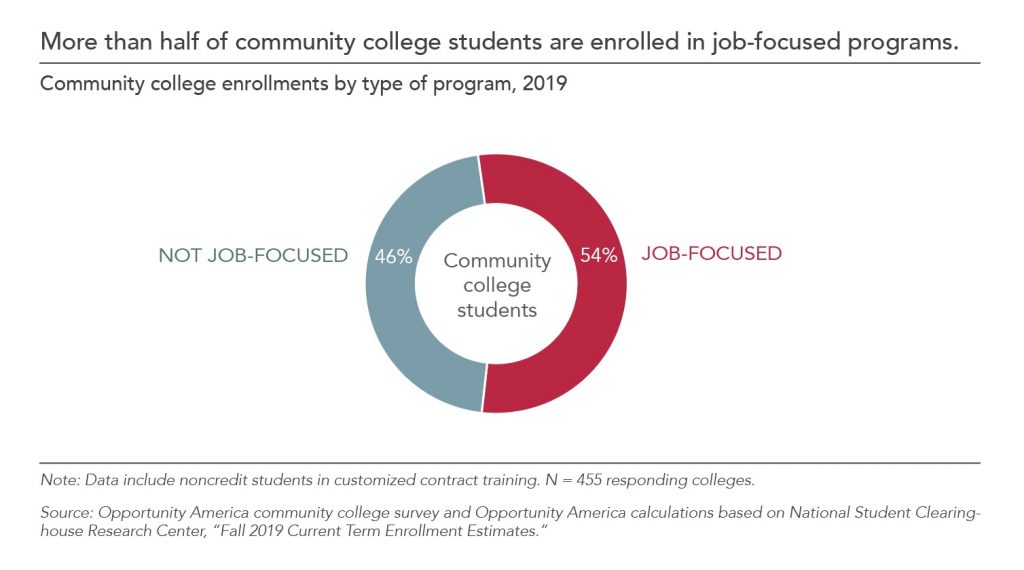
In addition, the noncredit division’s primary strength is workforce education. Responding colleges indicate that 57% of noncredit students are enrolled in job-focused programs. Most of the programs are less than a semester.
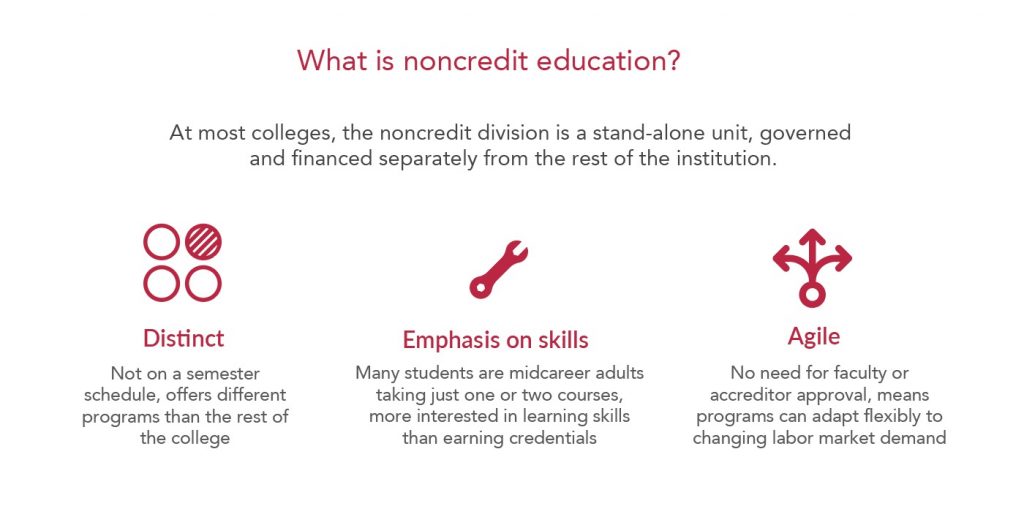
The report finds the student populations are widely diverse, stating, “There’s no such thing as a typical community college student.” However, there is commonality in that “their time at a community college is likely to be just one stop in a lifetime of encounters with postsecondary education and training.”
The report notes, one institution offers a blunt self-assessment. “Most community colleges know very little about the noncredit students who pass through their doors,” with an educator stating, ‘The only thing we know about them is whether or not they paid by credit card.’”
The value of prior learning
Some students have prior learning from past experiences including previous jobs or the military. However, it does not seem that simple to translate that prior learning into school credit.
The report says, “Asked if noncredit workforce students who later enroll in a credit-eligible program can leverage most or all of their prior learning for college credit, only 20% of colleges said this is true ‘always’ or ‘most of the time.’ Another 46% said it’s true ‘sometimes.’”
Aligning credit and noncredit programs
One finding says, “Many educators aspire to build bridges from noncredit to credit education, but relatively few colleges provide robust opportunities for moving between divisions, and few noncredit learners—at most colleges, fewer than 20%—take advantage of existing opportunities.”
Public-private partnerships
It’s critical that companies offer input into the needs of the local labor markets and, ideally, have a willingness to hire.
“There can be no effective job-focused education without employers. When the relationship works, industry partners supply information about business trends and changing labor market demand. They often collaborate with educators to design programs and develop curriculum.”
“Most valuable, in the closest and most intensive partnerships, they commit to hiring graduates and help the college improve instruction by providing feedback on their skills.”
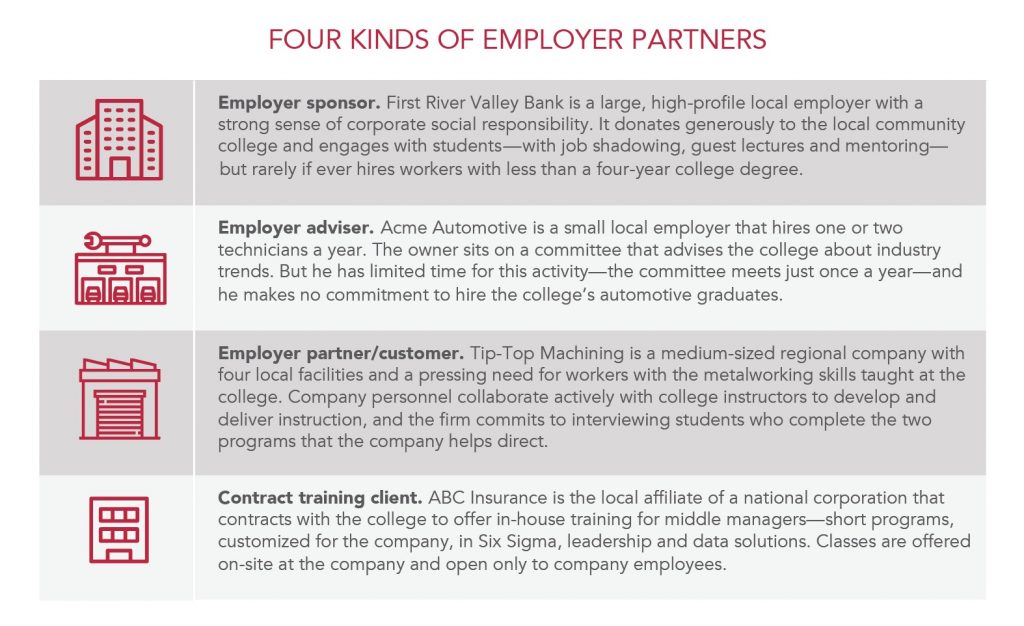
Incentivizing institutions
When the survey was launched, institutions were encouraged to present a scholarship program for their noncredit workforce students. A raffle that followed resulted in three responding schools receiving funds.
Jamestown Community College in New York state, a recipient of $10,000, notes it must offer “customized programs, provide flexible schedules, better-align offerings with job prospects, and increase applied learning opportunities.”
Holger Ekanger, vice president of workforce readiness at JCC, explains what motivated the community college to participate in the survey. “We felt that it was asking and providing a very comprehensive look at what we were doing as an institution. It’s a way for us to get a check on what other community colleges are doing, what other workforce development departments are doing. And how do we match up to do that?”
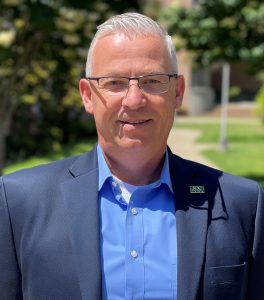
Ekanger points out that instead of using the word “credit,” when referring to programming, the school prefers “academic.” And instead of using the word “noncredit,” JCC uses “workforce.” Says Ekanger, “A student is a student is a student. We are looking at ‘academic and workforce’ being integrated and looking more at pathways and entry points, regardless of who you are.”
Academic enrollment at JCC’s three sites numbers about 2,150, while prior to COVID, there were approximately 1,900 students participating in short-term workforce trainings.
He explains that the Opportunity America award is part of a bigger $2 million fund that supports the development of employer-driven programs with a focus on specific skills, wraparound support for students and the related staffing, childcare and transportation subsidies, among other initiatives.
Engaging employers in the community is also critical, according to Ekanger. “Who do we partner with? Who are the employers that are interested and willing to provide input on the program? Are the same employers willing to hire on the back end? Who are the industry experts that need to help us?”
To help address these questions, JCC created a new position this year—instructional designer. “We have an individual with industry experience, working in a full-time job. It’s up to us to determine how are they going to spend their time,” says Ekanger.
“They might be visiting employers, talking about, ‘Hey, where are you going? What are you investing in?’ They might be going out to a different employer and delivering a training program. They might be teaching an open enrollment class specific to an area. They might be designing a larger program. That flexibility in being immediately responsive to that need is a game changer,” he says.

Currently, the initial focus at JCC is on IT, industrial and smart building automation, and machining/CNC, according to Ekanger.
He also notes that companies are willing to hire. “They are ready to go. Employers across every industry sector are just screaming for anyone that is interested in coming in and is willing to learn.”
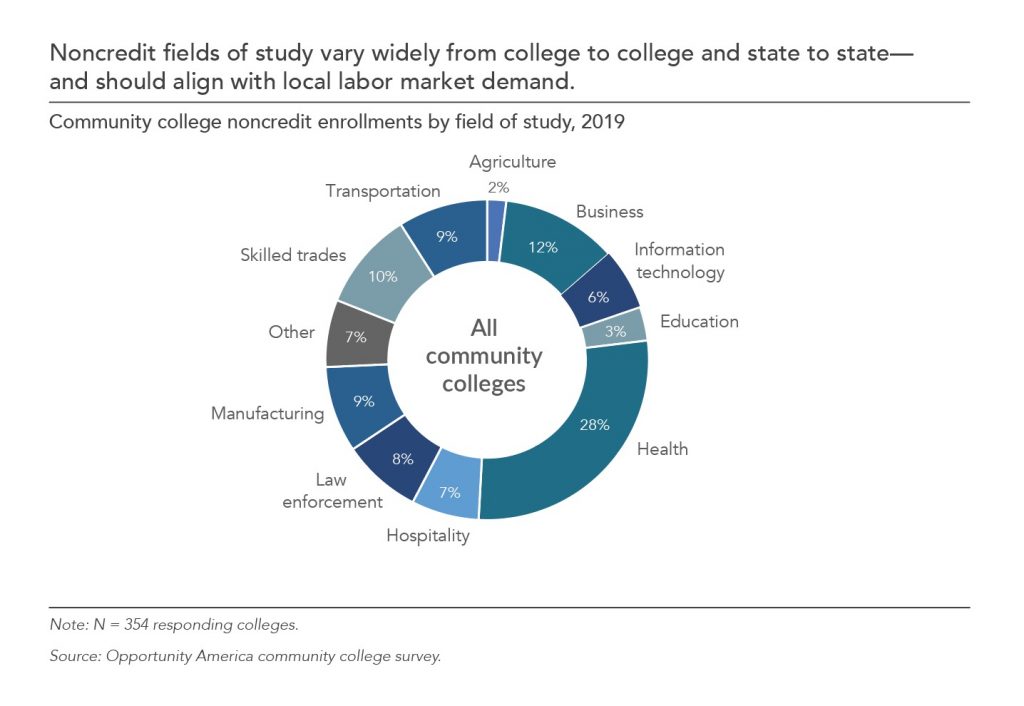
“The traditional college, certificate, and degrees will never go away, but we have seen the need for short-term, skill-specific flexible programs providing students the flexibility to take courses that are a little bit outside of the norm.”
Two other colleges each received $7,500 for scholarship funding—Lakeshore Technical College in Wisconsin and Paris Junior College in Texas.
‘The place to go’
“Community and technical colleges educate more people each year than coding boot camps, apprenticeship programs, and government job training combined—nearly 11 million students a year before the pandemic,” says the report.
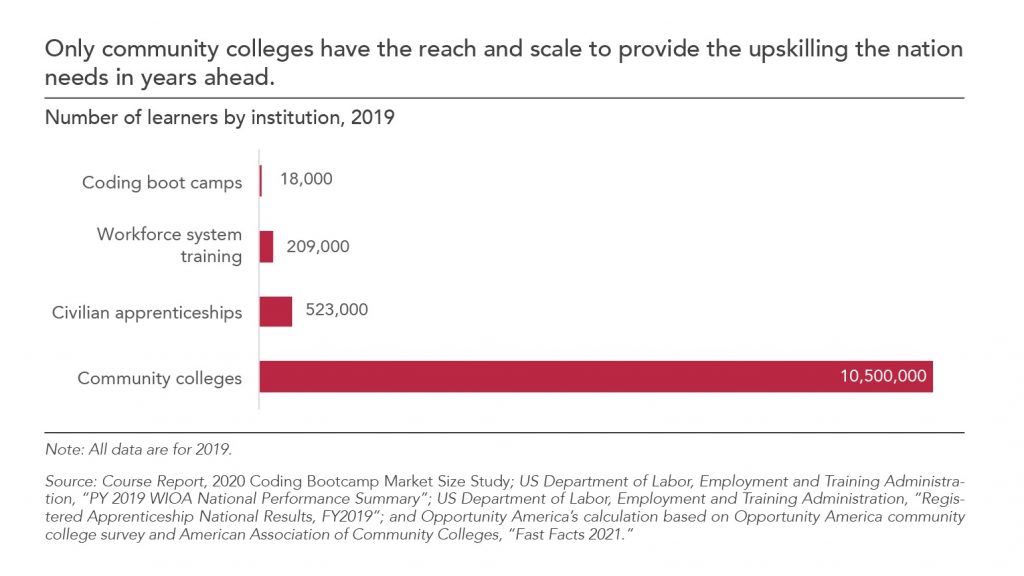
At the time the survey was launched, Jacoby noted, “Think of [community and technical colleges] as the place to go for the kind of upskilling and reskilling, that’s going to be needed in the years ahead.”
Says Jacoby, “Why do we need a survey? The main reason for me is that some of the most exciting innovation in higher ed is taking place at community colleges.”
It’s all-hands-on-deck to meet the challenge faced by educators and policymakers.
“Competency-based industry certifications are among the best tools we have to align credit and noncredit instruction,” says the report, “…how to ensure that these connections work, that programs align, transitions go smoothly, and no student has to repeat courses or relearn skills they mastered in the past in another setting.”
“It’s more imperative than ever today as accelerating automation amplifies the need for lifelong learning, repeated reskilling and upskilling to keep up with a changing economy.”
Click here for the full report The Indispensable Institution.


